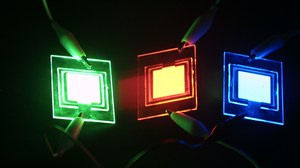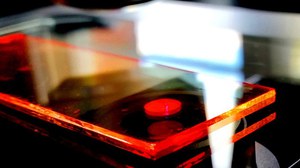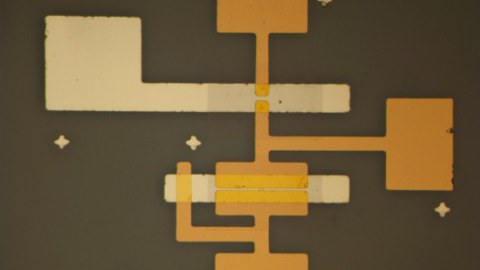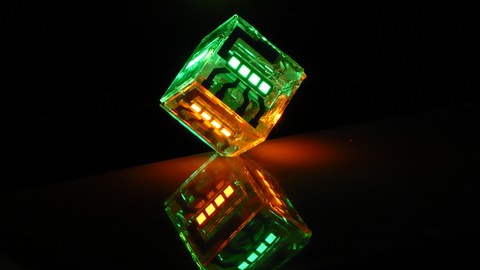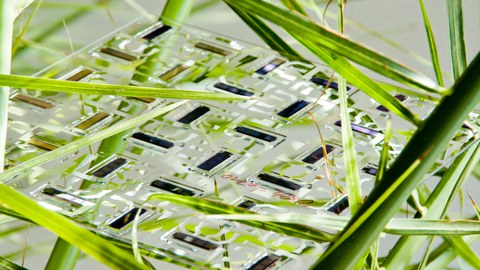Let there be light!
In the more than 100-year history of the institute and its predecessors, the interaction of solids with light has always been the focus. In the founding years, the focus was on the further development and understanding of photographic processes. Since the 1970s, the research focus shifted towards the physics of light-sensitive solids.
We are currently researching the electrical and optical properties of inorganic and organic semiconductors and how they change due to defects in the lattice structure. We develop and optimize organic components such as light emitting diodes, solar cells, lasers and circuits. We investigate plasmonic structures and metamaterials and analyze them with nanoscale methods.
Successful research in this interdisciplinary field of science is only possible through intensive collaboration between physicists, chemists and electrical engineers.
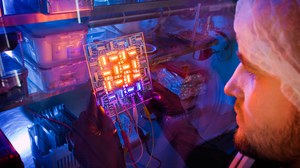 © Jürgen Lösel
© Jürgen Lösel
Research Focus
At the Institute for Applied Physics (IAP) at TU Dresden, we are primarily interested in the physics of light:
- How can light, e.g. from electrical energy, be generated? In addition to familiar applications such as lights and displays, this also leads to fascinating applications such as surfaces that can be written on with light.
- How does the propagation of light change when it interacts with matter? Here, for example, novel optical methods of examination of solids are exciting, such as optical near-field microscopy, but also metamaterials with which objects could potentially be made invisible.
- How can light be converted into energy? Photovoltaics as a sustainable energy source is currently on everyone's lips; We research light, inexpensive and even transparent solar cells and organic sensors, e.g. for inexpensive and non-destructive analysis of e.g. food.
- Semiconductors play an important role in the interaction of light with matter. Semiconductor physics is an important pillar of our research, we analyze the physical principles of charge transport in semiconductors, develop organic circuits and biocompatible electronics.

